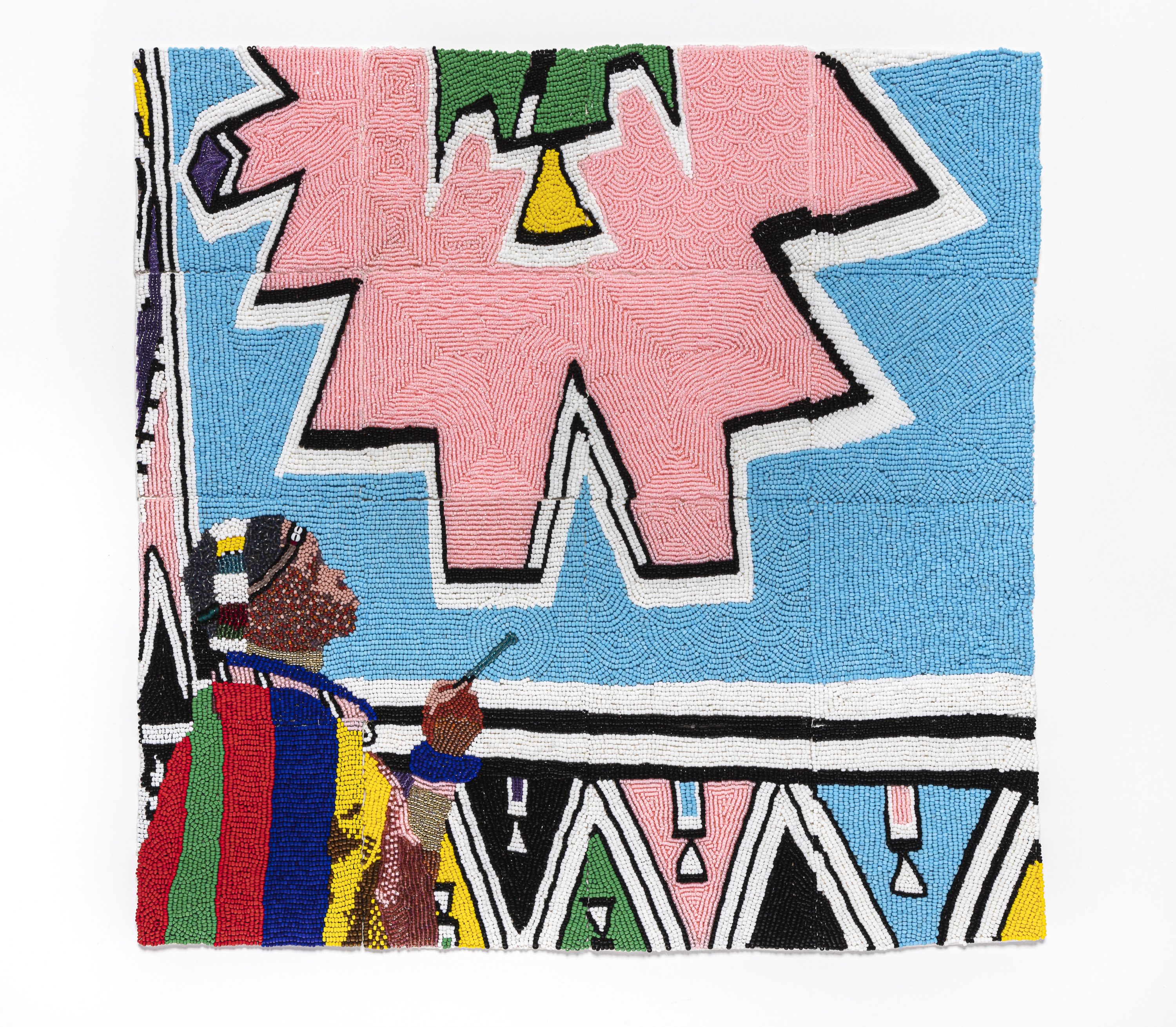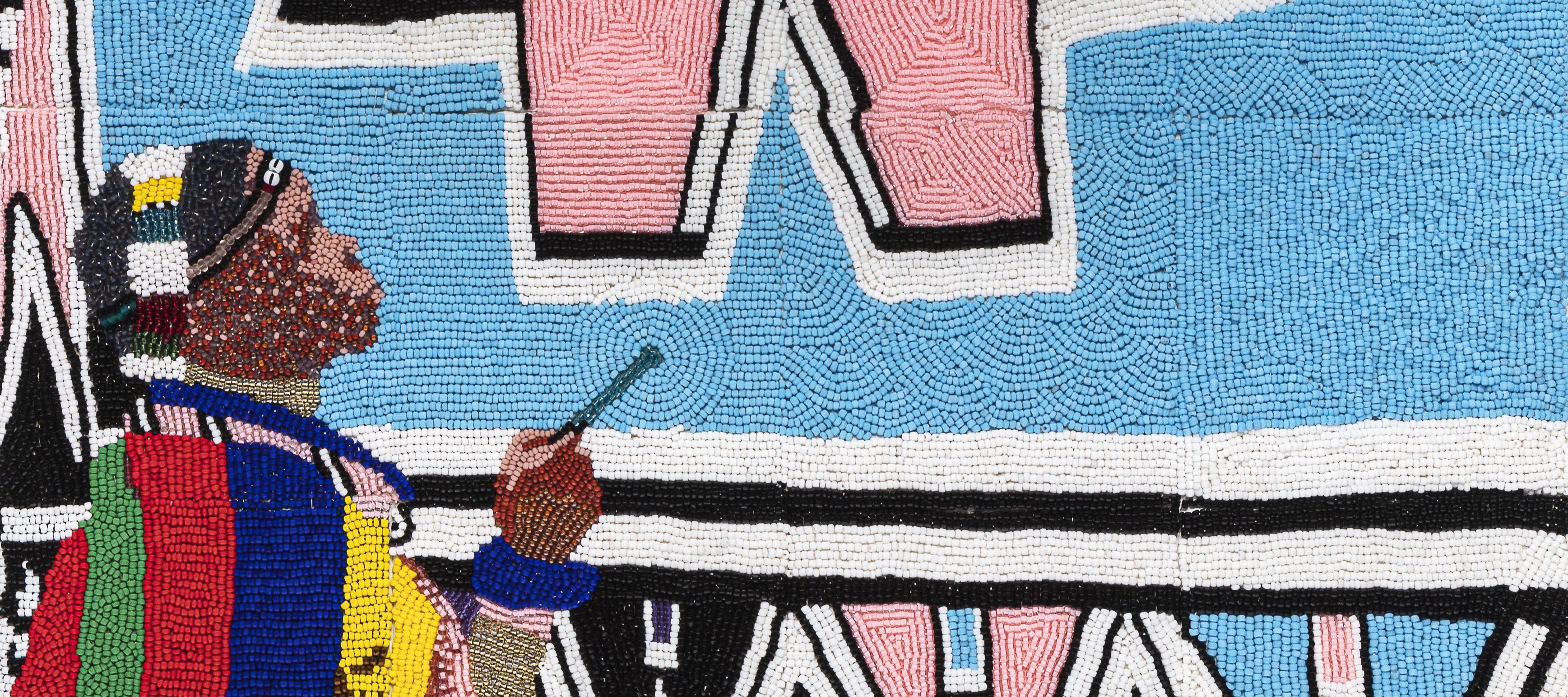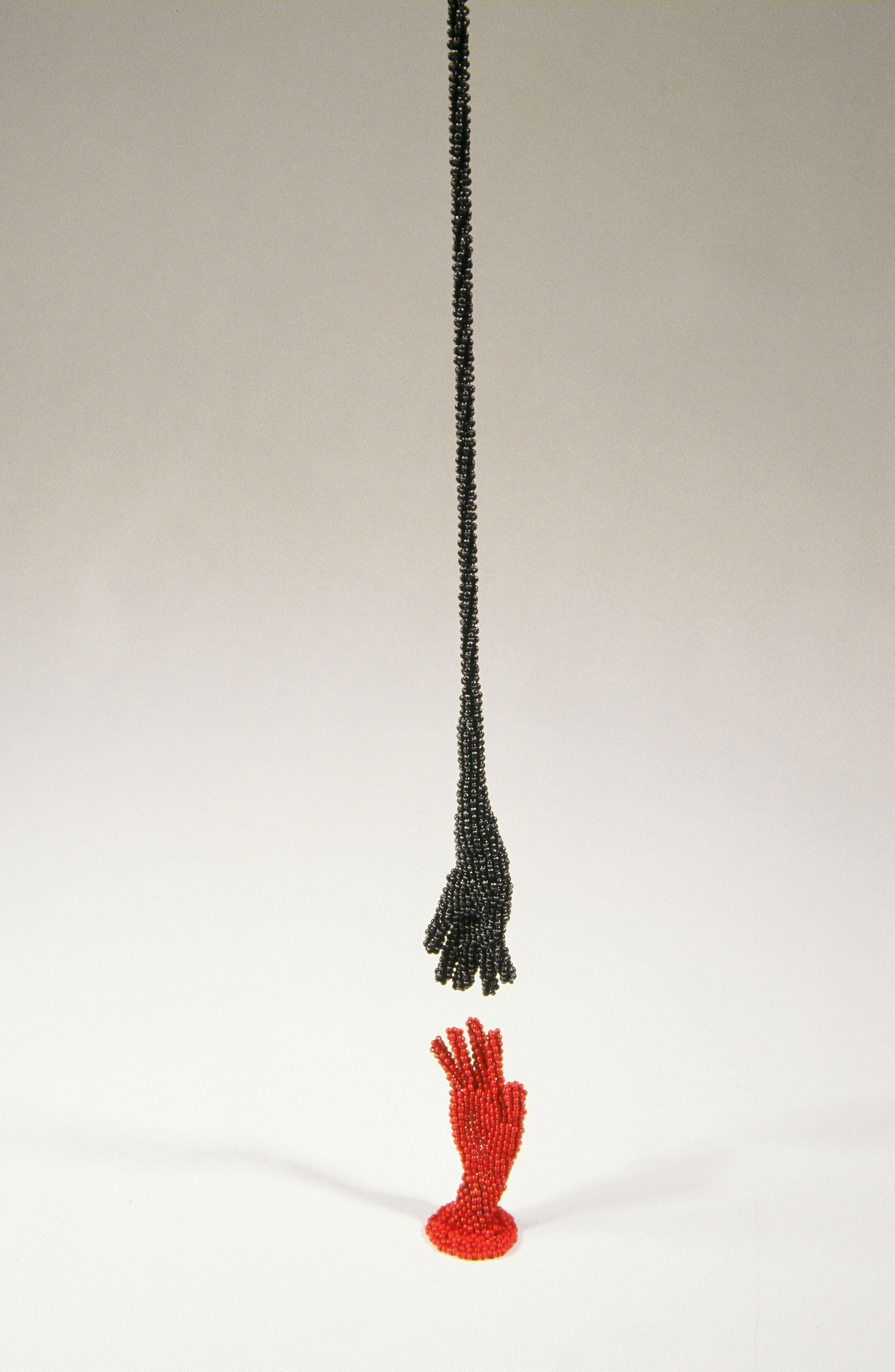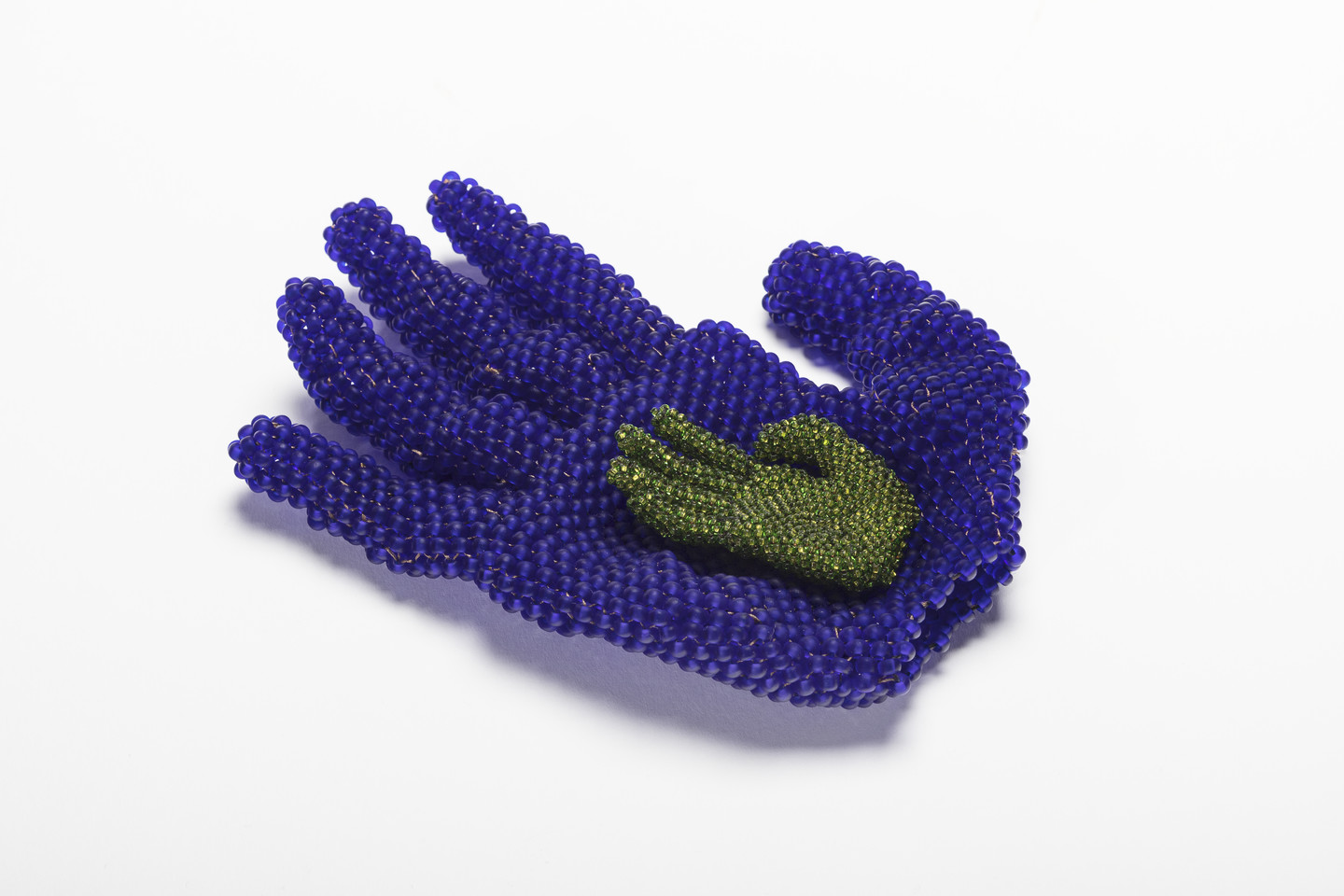Sonya Clark: Tatter, Bristle, and Mend speaks of family, cultural connections, and African American heritage. From her love and memories of a grandmother who she knew for only ten years and her mother who she honors in several works, Clark reminds us that family is one of the threads that binds humanity. Family for Clark, however, also extends to connections one has to the lives of others. Her belief in this larger, protracted family circle is inspired by activist and author James Baldwin’s comment about art as a “kind of confession.” Clark said, “He described examining one’s life so you can determine how you are connected to other lives. And, then, those others can discover the terms by which they too are connected to other people.”
It is this connection to the power of cultural permanence and the permanence crucial to the heritage of African Americans from an Africanist perspective that underlies several of Clark’s objects. One such work is Esther Mahlangu’s Touch (2015). At first glance, the work appears to simply invite the viewer to examine the tactile surface of the beadwork created in honor of the South African artist’s commissioned painting for the Virginia Museum of Fine Arts in 2014. Closer inspection suggests a complex cultural connection that links both artists to the mystical act of artmaking.

Clark’s depiction of Mahlangu’s touch hints of the divine. The concentric circles from the tip of her brush give the impression that the image she paints comes magically into sight. Clark further links the work with that of other innovative Ndebele artists, as women in the communities are the sole designers and creators of beadwork. Their use of symbolic geometric patterns and colors often comment on an individual’s age, social class, and status. Beaded garments, jewelry, and textiles can communicate messages of affection, marital relationships, and spiritual protection.
It is not incidental that beads play an important role in Clark’s aesthetic. Clark uses beads as emblems of adornment and empowerment. She also attaches anthropomorphic significance to beads, and proclaims: “With beads, it’s all about the hole…The holes in beads are like the orifices we use to communicate….I measure time, transfix gestures, celebrate cultural memory, and explore metaphor through the medium of beads.”
Clark’s beadworks remind us of the importance of touch, whether intimate or across distance and time, and of the creative energy in an artist’s touch. She chronicles this story that stretches beyond generations, of cultural connections where glass beads, used for adornment, currency, and prayer, can still function as ancestral bonds among African Americans and the African diaspora.



